
A garden designer has the difficult task of balancing texture, color, and space while simultaneously dealing with the unpredictability of nature. Long ago I gave up on the idea of ever being good at garden design. But help has come from an unlikely source, Piet Oudolf and Noel Kingsbury’s revolutionary book Planting A New Perspective.

High Line Park.
Piet Oudolf is probably best known in the US as the plant designer for the High Line park, an abandoned elevated railway turned into a park in New York City. Noel Kingsbury is a gardener and writer who has been the primary promoter of Oudolf’s work and what has come to be called naturalistic gardening or the “new style.”
It’s an approach that’s more complex than it might seem at first glance. Oudolf walks a fine line between the public’s desire for “nature” and the untidiness of the real thing. Oudolf responds with what some have called “enhanced nature.”
It’s an approach that’s pragmatic, recognizing both the need for natural ecosystems within an urban environment, while at the same time providing visual interest. Oudolf’s imprint is on the landscape, but to most people that human touch will remain on a subliminal level. It’s a brilliant “third way” strategy outside of the dualistic smackdown between the simulated nature of English style gardening and the rectilinear hedges of Versailles.

Oudolf’s plan for the Serpentine Gallery garden.
Fruitcake design
In Planting, Oudolf and Kingsbury describe their approach as like a fruitcake. The dough of that fruitcake is what Oudolf calls “matrix” plants, most often grasses, that hold together the overall design. The fruit in the fruitcake are what he calls “primary” plants, “high-impact plants chosen for strong color or structure.” Like the fruit in the fruitcake primary plants repeat in clumps throughout the overall design. He suggests a 70% matrix plant to 30% primary plant ratio. Lastly, Oudolf introduces “scatter” plants, sometimes by literally scattering seeds that will pop up seasonally and introduce spontaneity and wildness.
Oudolf and Kingsbury favor perennials both for environmental reasons (popping in annuals every year supports a energy intensive nursery industry) and for aesthetics (perennials are more prevalent in the natural landscapes Oudolf is mimicking).

Winter on the High Line.
The tyranny of the rose
Oudolf and Kingsbury stress the importance of choosing plants that have interesting structure throughout the year. Too often, they say, garden designers choose plants, such as roses, that flower in the spring but have uninteresting foliage the rest of the year. Oudolf’s ideal plant flowers, has striking foliage in the summer and fall and produces seed heads towards the end of the season. Those seed heads provide visual interest and food for birds and other wildlife.
I was also struck by how similar Oudolf’s gardens are to the edible landscapes of Native Californians as described by USDA botanist Kat Anderson. As Anderson has shown, the “wild” landscapes encountered by the first Europeans to visit the west coast were anything but wild. They were, in fact, carefully tended and very similar in appearance to Oudolf’s designs. You could easily combine Oudolf’s aesthetics and Native American practices to create an edible and medicinal landscapes–many of the flowers Native Californians encouraged have edible bulbs or foliage.
Criticisms
Oudolf’s work is cutting edge and by his own admission there are problems–such as maintenance workers confusing plantings for weeds. Kelly and I also debated how much this book can be used to understand small residential spaces–I found the ideas helpful, but most of the photographs are of large public gardens. And the plant lists are of no help for those of us in Mediterranean or tropical climates.

Oudolf’s garden in Hummelo, the Netherlands.
Conclusion
But these are minor criticisms–Planting is provocative and practical, with far ranging implications about the way we interact and perceive landscapes. Oudolf’s style both acknowledges the agency of humans at the same time as it provides habitat for wildlife. His approach is desperately needed in our cities and backyards.
More than any other book on garden design, Oudolf’ and Kingsbury’s Planting helped me understand how plant designers work. I can now see the problems with our garden (a lack of matrix plants), and appreciate the work of other garden designers even if their approach is different than Oudolf’s.
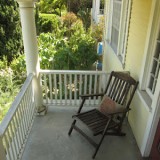
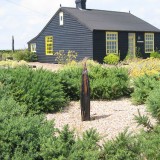
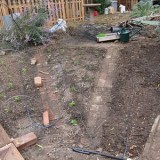
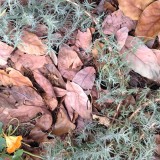
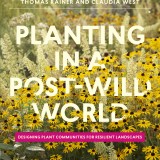
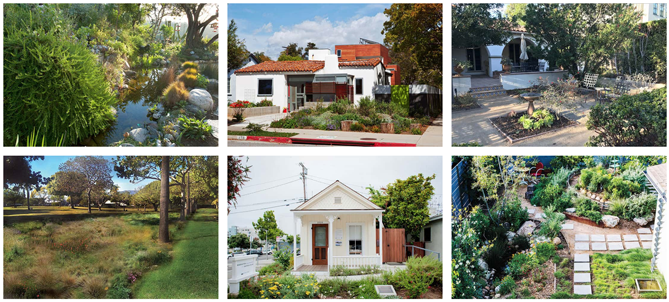
Interesting post about the “park” up on the high line. I recently moved to NYC from LA and on my first visit here a few weeks ago I was struck by the beauty of the garden design. It’s really stunning because it’s so not NY and really does make you feel like you’re out in the wild somewhere. So there’s definitely something revolutionary about the design principles!
Pingback: In Praise of the Hedgerow | Root Simple
I think your primary (structural) to matrix ratio may be incorrect. I believe it is 70 percent structural to 30 percent matrix.
Pingback: 024 Water, Wilding our Gardens and Sewing | Root Simple
That’s way the bestest answer so far!